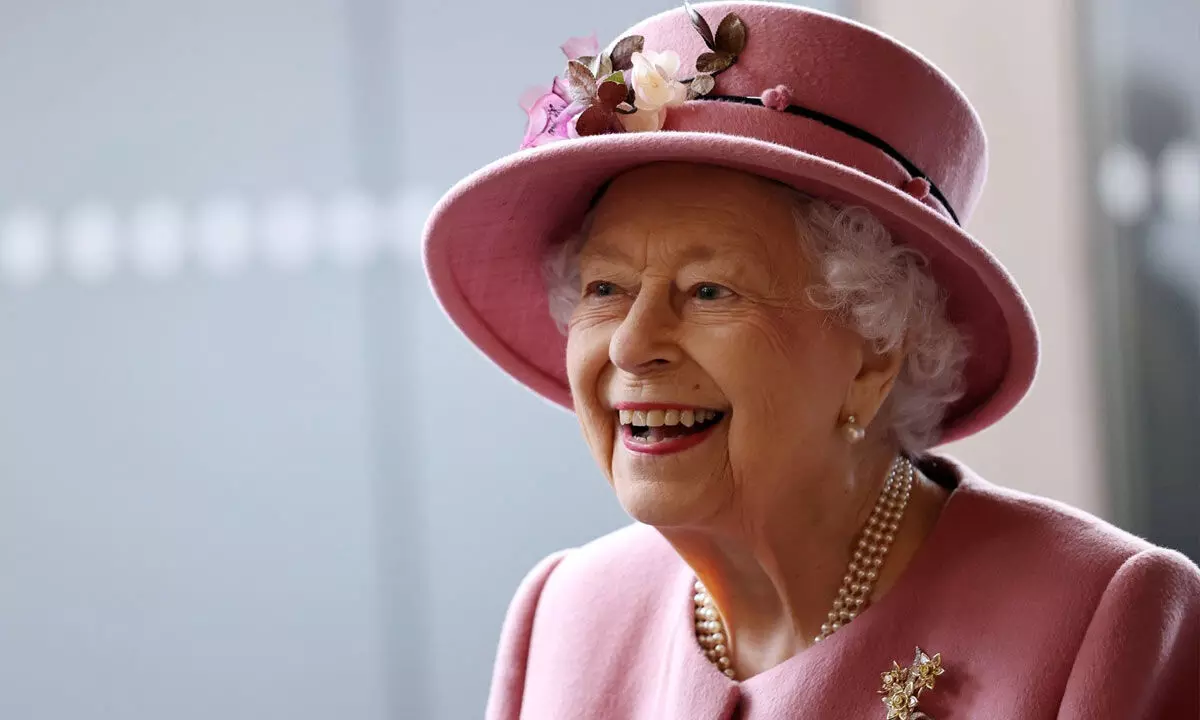The end of the 'new Elizabethan age'

Queen Elizabeth II
When Queen Elizabeth II came to the throne in 1952, Britain was just seven years out of the second world war.
When Queen Elizabeth II came to the throne in 1952, Britain was just seven years out of the second world war. Rebuilding work was still ongoing, and rationing key products such as sugar, eggs, cheese and meat would continue for another year or so. But the austerity and restraint of the 1940s was giving way to a more prosperous 1950s.
It is perhaps no wonder, then, that the Queen's succession was hailed as the "new Elizabethan age." Society was changing, and here was a young, beautiful queen to sit at its helm. Seventy years later, Britain looks very different.
Elizabeth II ruled over perhaps the most rapid technological expansion and sociopolitical change of any monarch in recent history. Looking back on Elizabeth II's life raises key questions about not just how the monarchy has changed, but also how Britain itself has transformed throughout the twentieth and twenty-first century.
Global Britain
The Commonwealth has a veneer of colonial power given that it shares a history with Empire, and continues to invest the British monarch with symbolic power. The Queen was the living embodiment of British stoicism, "the Blitz spirit", and global imperial power, on which so much of the Brexit rhetoric hung. What will the loss of Britain's longest-reigning monarch do to the nostalgia that contemporary right-wing politics draws upon?
Media and monarchy
At the coronation, the British prime minister, Winston Churchill, allegedly responded to proposals to broadcast the ceremony on live television that "modern mechanical arrangements" would damage the coronation's magic, and "religious and spiritual aspects should [not] be presented as if it were a theatrical performance." Despite these concerns, televising the coronation was a big success.
The royal image has always been mediated, from the monarch's profile on coins, to portraiture. For Elizabeth II this involved radical development: from the emergence of television, through tabloid newspapers and paparazzi, to social media and citizen journalism (processes related to democratisation and participation). Because of this, we now have more access to monarchy than ever before.
Diana's Panorama interview in 1995 was iconic, where she told interviewer Martin Bashir about royal adultery, palace plots against her, and her deteriorating mental and physical health. More recently, Prince Harry and Meghan Markle's interview with Oprah Winfrey discussed what they described as "the Firm's" racism, lack of accountability, and its dismissal of Markle's mental health. These interviews really did expose the inner-workings of institution, and ruptured the visibility/invisibility balance.
Political figures
The Queen succeeded to the throne during a period of radical political transformation. The Labour Party's Clement Atlee had won office in 1945 in a sensational, landslide election which seemed to signal voters' desire for change. Winston Churchill's Conservative party retook parliament in 1952. Churchill spoke to a different version of Britain: more traditional, imperialist, and staunchly monarchist.
In the 1980s, Margaret Thatcher's Conservative government began a systematic dismantling the postwar welfare state, instead emphasising neoliberal free markets, tax cuts and individualism. By the time of Tony Blair's "Cool Britannia" years at the turn of the new millennium, the Queen was an older woman. Princess Diana was famously the "people's princess" of the age, as her new brand of intimacy and "authenticity" threatened to expose an "out of touch" monarchy.
What next?
While she was head of state throughout many of the seismic political, social and cultural changes of the 20th and 21st centuries, the fact that she rarely gave a political opinion means she successfully navigated the monarch's constitutional political neutrality. The Queen remained an image: indeed, she is the most represented person in British history. For seven decades British people have not been able to make a cash purchase without encountering her face. Such quotidian banality demonstrates monarchy's – and the Queen's – interweaving into Britain's fabric.
The Queen's death is bound to prompt Britain's reflection on its past, its present and its future. Time will tell what the reign of Charles III will look like, but one thing is for sure: the "new Elizabethan age" is long gone. Britain is now recovering from recent ruptures in its status quo, from Brexit, to the COVID-19 pandemic, to ongoing calls for Scottish independence. Charles III inherits a very different country than that of his mother. What purpose, if any, will the next monarchy have for Britain's future?
(Writer is Lecturer in Media, Lancaster University; The Conversation)

















